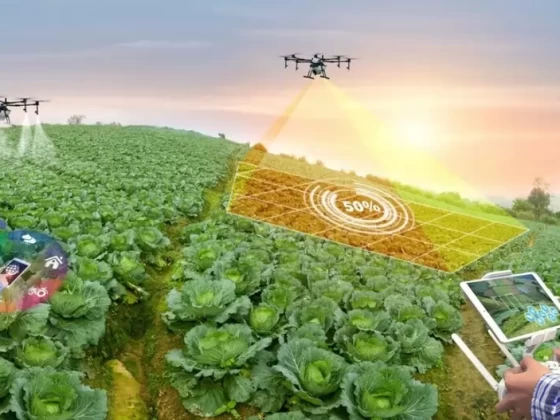by | Ahmad Razif Mohamad, razif@might.org.my | Natrah Mohd Emran, natrah@might.org.my
Why they matter?
While some teetering and babbling Alphas’ otherworldly adoration makes them the apples of our eyes, many born in 2010 have already started schooling. Being raised by Millennials and Gen X, Generation Alpha, wholly born in the 21st century, is peculiarly used to big screens and mobile phones as pacifiers, entertainers and educational aids.
Although Generation Alpha is not born inherently different to Millennials or Generation Z, with the world on the brink of a rapid reorganisation, much of Generation Alpha’s personalities, motivation and outlook will be shaped by this tectonic shift. To put things into perspective, many of the outgoing jobs today, will simply not exist in 2040 when Generation Alpha joins the workforce. They are definitely the start of something new, not a return to the old.
Globally, this generation is expected to be the wealthiest, most formally educated and most technologically supplied generation ever. However, we need to reorient our long-held views to accommodate new behaviour that this entrepreneurial generation will catalyse.
Governments, education providers, businesses and city planners are among the key stakeholders that have to think and act now to cater to a new demographic sophistication (education modules, learning tools, technology adoption, content creation, etc.). In short, greater access to technology will lead to new ways of thinking and doing. And as the speed of technological change accelerates, this too will accelerate our changing expectations.
For example, a complete redesign of shopping malls might be needed to cater to a new retail experience for this generation. Understanding why they will behave the way they would is a crucial indicator to crack who they really are behind the skin. Mobile and wearable devices feature heavily in Generation Alpha’s lives. Growing up to the development of technology, Artificial Intelligence (AI) and sophisticated algorithms provide Generation Alpha new ways of communicating and interacting.
Perhaps this explains why many professional trend forecasters are trying to wrap their heads around this young cohort. The following is a general consensus about the demographic group, at least, analysing by the very little we know today can give us a head start in figuring out how this generation would tip the balance in the future. In no way this article intends to define the essence of Generation Alpha, but rather, we are trying to project a provisional generational identity onto what could be the most important generation of the 21st century.
The technologies shaping Generation Alpha’s social fabric
AI is a prevailing trend that’s shaping Generation Alpha’s technology outlook. To a substantial degree, some AI devices are already targeting Generation Alpha. These devices pair AI with image or voice-recognition technologies such as Mattel’s Hello Barbie and last Christmas’ must-have Hatchimals.
Further making inroads are AI assistants such as Amazon Echo and Google Home. These devices are slowly making their way into homes. All this could potentially create a shift in children’s perception of intelligence. Another example is MIT Media Lab’s recent study that revealed children find AI “agents” such as Amazon Echo Dot and Google Home friendly, trustworthy and even smarter than themselves. However, even at such tender ages, the children under study realised that they were not human and regarded them closer to animals or pets.
Higher expectations of smart devices
Generation Alpha is a demanding lot. They want their physical play experiences to deliver more fun, interactions and responses. Nonetheless, Generation Alpha will likely have higher expectations of smart devices as they’re exposed to them from a very young age. As a result, devices that interact with Generation Alpha will need to gain emotional intelligence to cater to Alphas’ growing demands.
Cultivating this idea is a robotics company called Anki. The company is currently developing intelligent robots to be marketed as pets to Generation Alpha. Called the Cozmo, the Ai toy robot began life as a project to push the envelope of AI and robotics technologies. Anki’s executives wanted to bring charming characters usually found in animation movies into the real world.
Instead of transmitting facts like Siri or Alexa, the little toy robot endears its owner with its big AI brain and personality. Although the Cozmo does not speak, it communicates through movements and expressions. Its “eyes” are displayed on a small screen and facerecognition technology allows the robot to recognise its owner and say their name using its distinctive voice tones.
Voice recognition
Voice recognition technology is going to grow at a rapid rate. While screens put up a barrier between users and their environment, which oftentimes result in insular, singular user experience, voice-technology is quite the opposite. Making technology more accessible to younger children, interactive voice-recognition interfaces will affect Alphas play patterns in completely new ways.
To illustrate, voice-recognition technology provides a solution for young Alphas to interact with AI computers without needing the literacy to operate computer tools such as a keyboard. However, at present, an MIT study recently showed that voice-recognition systems are not yet ready and struggle to capture the real meaning of young children’s talk. Despite this, voice-recognition technology will become a major technology platform that will rival interactive screens.
Gestural control
Generation Alpha’s interactions with technology will become more physical and gestural in the future. With the rise of Virtual Reality (VR) and Augmented Reality (AR), gestural interfaces allow people to interact with digital content using hand or body movements. These movements are synced to wearable devices and tracking sensors. Interestingly, as travelling becomes more expensive and difficult due to changing attitudes in response to climate change, AR will rack up wider applications as a means to explore new landscapes and destinations.
Data, smart devices and wearable technologies are fashioning highly personalised products and services to serve Generation Alpha consumers in the future. Based on feedback, machine-learning algorithms now have the ability to learn how consumers interact with a device over time and tailor the experience to their needs. This is a common theme that forward forecasts have identified to be a critical measure of Generation Alpha’s growth.
Future trends
By 2040, the eldest Alphas will be 40 and the population is predicted to reach 35 million. As with all generations,
when and how they grow up will impact how they behave and the choices they make. Although forward forecasts tell us that Generation Alpha will be under strain with multiple trends and forces below buffeting their future, we can learn a fair bit about them by analysing some key areas to find out what makes them tick.
A highly entrepreneurial generation
Every new generation is more entrepreneurial that the one that precedes it. Given that Generation Alpha will turn out to be the most sophisticated generation ever, it is no different. Higher access to information and resources will see a lot of Alphas starting-up their own business ventures before the tender age of ten. This early learning curve will greatly improve their chances of success as Alphas will grow up taking more chances than neither their Millennials, Gen X nor boomers family members ever did.
Education
Generation Alpha obtains robust education from online learning. Although we understand that they will be in the education system longer, Alphas have their own way of keeping abreast of the knowledge they need. A huge percentage of them will forgo the higher education system altogether in favour of cheaper or free selftaught medium. Families of means however will be able to stretch support for their Alphas by investing heavily in education. When Generation Alpha eventually steps forward to the fore, the divide between the rich and the poor will become much greater.
Tech savvy but isolated and heavily dependent on social networking platforms
As mentioned earlier, Alphas are introduced to mobile phones early in life. Alphas grow up learning by using technology in intertwined processes. Going into their teenage years, Alphas’ mobile phones sport high levels of sophistication and they primarily use their mobile phones over laptops or desktop computers. The mobile platform is very important to visually-inclined Alphas. They gravitate more toward mobile-friendly applications that are easy to navigate and deliver engaging user interfaces. Significantly, Generation Alpha expects nothing less but everything to be customised to their individual needs. So, to tap into this demographic group, either for marketing or recruiting purposes, winning across the mobile platform is a critical imperative.
Digitally-impaired?
Despite Millennials being considered digital natives, Alphas are one step ahead. It’s telling when we take into account that their first babysitters were iPads! The first Alphas were born the year iPad was launched back in 2010. To most Alphas, a screen is more natural than a piece of paper having had one in their hands before they could barely talk.
However, being exposed to mobile devices so early in life has its toll on Alphas. Implications such as delays in speech and social development have been well documented over the years. With so many variables and split opinions, it’s mounting up to be a huge challenge for educators to forecast how this will impact Alphas’ learning and what they need to do to overcome this rampant ailment. A whole new retail experience Generation Alpha primarily shops online and makes less human contact than previous generations. In a recent McKinsey study, 40% of employers said the they were experiencing difficulties filling vacancies because younger workers lacked soft skills such as communication and teamwork. Despite being the most connected generation, Alphas spend considerably less
time talking to each other. This is clearly one of Alphas’ inherent shortcomings.
They heavily take after their Gen X and Y parents
Alphas may have been born to much older parents by comparison with earlier generations. After all, this comes as a result of Gen Y deferring marriage and childbearing. Despite this, Alphas take after their parents a lot. Similarly, as Gen Y was always made to feel entitled, this too will carry over to Gen Z and Generation Alpha.
Alphas too will raise their kids how they were raised and much of their Gen X and Gen Y parents’ influence will exert impact upon Alphas’ decision-making well into their adulthood. Evidently, every new generation is getting more influenced by their parents more than their friends, influencers and the surrounding. To most Alphas, what their parents make of a product or a service is just as important as their own views.
Bigger shoes to fill
In relative terms, Generation Alpha is more self-sufficient, better educated and is better positioned for success. However, like we mentioned earlier, Generation Alpha will have to face up to many of the world’s most acute
challenges. This includes global warming and economic deficit. In general, demographic experts hinted they won’t have much social security or safety net to fall back on, but will enjoy the benefits of healthcare programs such as Obama Care and the likes.
By looking into their demographic composition in Malaysia, future Generation Alpha parents can anticipate what types of future support Alphas may need in respect of their mental and financial well-being to help them reach their full potential.

The future job market, what does it mean to Alphas?
Many of today’s jobs will not exist when Alphas (born between 2010-2022) begin to join the workforce. Some industry leaders believe that by 2040, AI with human level intelligence will be walking down the street and undertake much of the work we do today.
In 2040, not many of today’s jobs will endure the test of time. Going back, between 2000 and 2010, it has been estimated that robots and automation have made redundant approximately 5 million manufacturing jobs in the US alone.
Future skills & training
AI and automation have largely been at the centre of world discussions around the future of work. The Oxford Martin School for example estimated that approximately 50% of all US jobs today are in jeopardy of industry automation. McKinsey however stated that 60% of today’s jobs comprise at least 30% of automatable activities.
This rapid reorganisation requires a complete overhaul of the skillsets that the vast population of today’s workforce will pass down to their Alphas. The next generation requires all these skills to adequately explore, process, and use
knowledge well beyond their own bounded knowledge and understanding.
In relation, the Partnership for the 21st Century Learning has identified four skills that should be emphasised to prepare children for the future of work: creativity, critical thinking, communication, and collaboration. These skills need to be put in place to help Alphas empower their knowledge to find an edge in a constantly changing world.
Future classrooms
To prepare Alphas for the job market, today’s schools must be equipped with high speed internet and embrace social
platforms. Schools need to expose students to new technologies much faster. Technologies such as 3D printing,
drones and robotics are the centrepiece of tomorrow’s industries. In part, schools need to articulate what impact these new technologies could impose in the future.
Alongside technology, schools need to frame a global context across their teaching curriculum. Teaching staff too need to be trained with up to date strategies and teaching techniques to deliver enduringeducation that can help Alphas with their career outlook down the track.
Additionally, schools need to introduce new fields such as user experience design and the latest schools of thinking as a scaffold for project work. Not only that, schools need to form joint-efforts with international partners so that their students can benefit from wider industry linkages and networks.
Regardless of the field Alphas choose, the ability to think creatively and being quick on their feet are indispensable skillsets of the future. In view of increasing automation and demanding future workplace expectations as identified by the World Economic Forum, higher adoption of technology in schools is a must to promote career connected learning.
To illustrate, Pearson recently partnered with Nesta and the Oxford Martin School to predict which current jobs are most likely to see increased demand by 2030.
These jobs are clustered up into two fields: Service Providers, and Content Creators and Managers. Both clusters demonstrate jobs that require human’s cognitive skills that are almost impossible to replicate with AI.

What does Generation Alpha support system look like?
Every stakeholder plays a crucial role to prepare Alphas ahead of time for their generation. Similarly, Malaysia needs a conducive environment to learning in order to fulfil our Generation Alpha’s future promise.
Government
To begin with, the working landscape and the economy in which Generation Alpha will navigate are a stark contrast
to what they are today. In turn, we have to uphold equal rights and workers’ rights legislations, and map them
across the needs of the freelance economy.
Apart from legislation, any outstanding issues around the freedom of information in the digital age need to be put to bed to accelerate the economy. New protection instruments must find a way to co-exist, in the same way patents had done in the last century.
However, security and privacy concerns are ailments that may plague Generation Alpha. While AI tools and increased data collection allow personalised interactions, they also pose security and privacy risks. The increase in devices connected to the internet makes Generation Alpha more vulnerable to hacking.
In particular, it is quite difficult to legislate devices that collect data from children as they do not have the cognitive maturity to provide consent. For example, devices such as smart baby monitors and bracelets that parents use to track their babies’ health stats or movement are collecting information about infants who have no knowledge of how their personal data is being used. By and large, this calls attention for the need to raise technological literacy among parents! However, will our policies be ready to meet these challenges?
Industry
Innovation is the key to survival. Even more so, organisations must turn to technology to address tomorrow’s economic expectations. The pace of technology adoption and the use of data are the drivers of tomorrow’s economic efficiency and valuable business insights. While automation of processes promises to free up the workforce’s roster in order to focus on more stimulating tasks, innovation will be crucial to retain Generation Alpha’s customers and employees.
More than any youth generations that came before them, Generation Alpha will seek the ‘latest’ and the ‘newest’ and they’ll have no qualms about switching products or services. Consequently, this will prompt shorter life cycles of brands and products. Brands can no longer afford to under invest as they have to make sure they have new
products and services in the pipeline to continuously deliver. However, will our businesses be able to cope with the dynamic demands of Generation Alpha?
Academia
Again, this is the most formally educated, the most technologically supplied and the most entrepreneurial generation ever. They are all too comfortable with the seamless integration between technology and everyday living. Likewise, Alpha students expect technology to be integrated into their curriculum too. By virtues of having higher and earlier access to technology, don’t expect Alphas to wait around until college to kick-start their career learning or business ventures. Many Alphas will already have started their own companies when they enrol into university. However, will our universities be relevant in the future?











